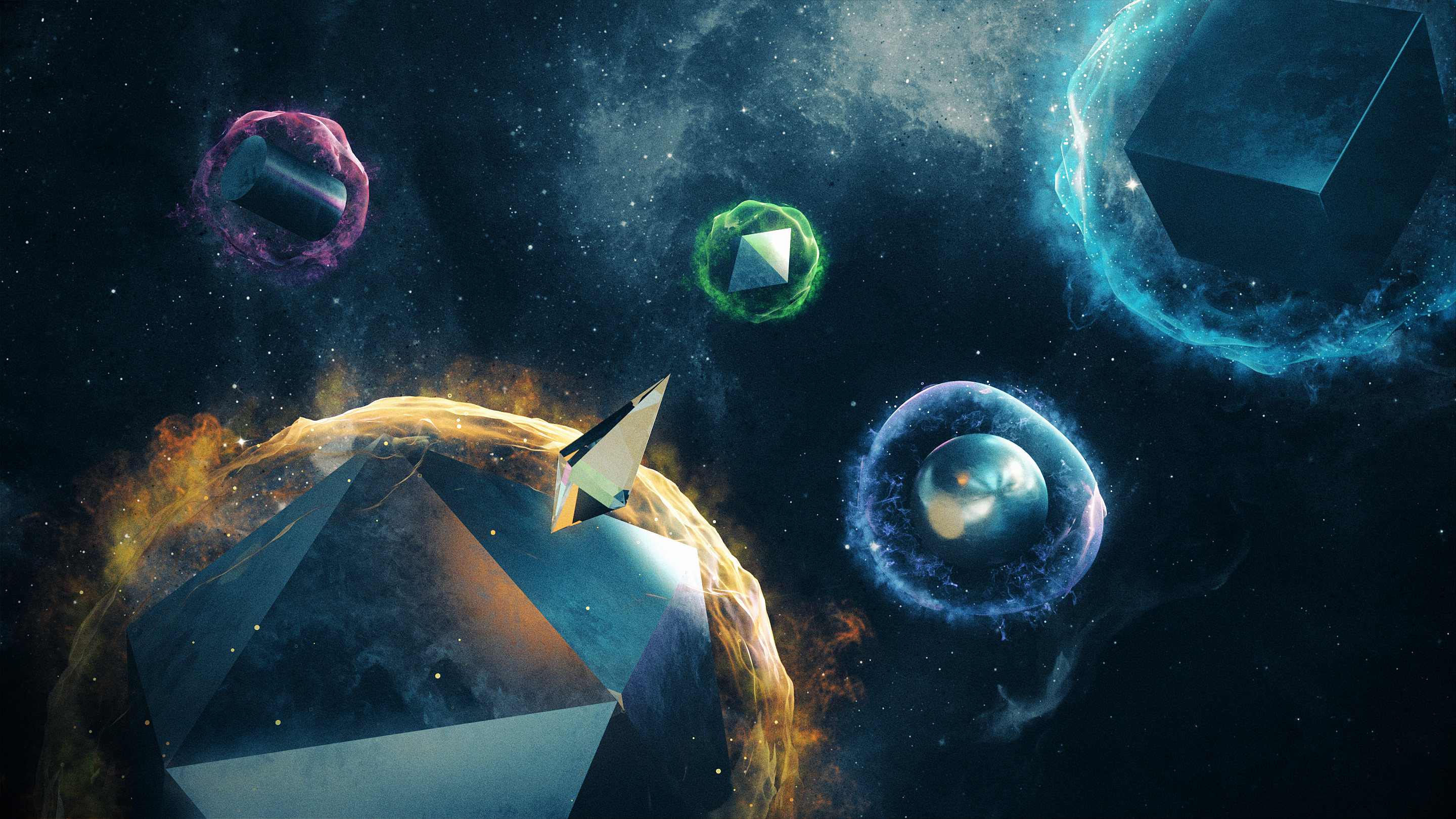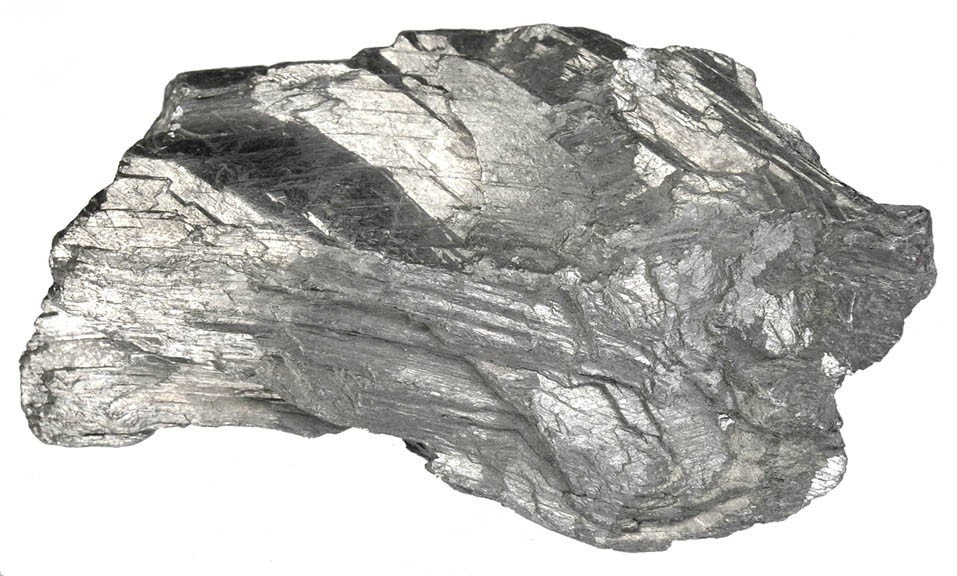‘Quantum Atmospheres’ May Reveal Secrets of Matter

Diamonds may be able to probe the quantum atmospheres of interesting materials.
Mike Zeng for Quanta Magazine
Introduction
Over the past several years, some materials have proved to be a playground for physicists. These materials aren’t made of anything special — just normal particles such as protons, neutrons and electrons. But they are more than the sum of their parts. These materials boast a range of remarkable properties and phenomena and have even led physicists to new phases of matter — beyond the solid, gas and liquid phases we’re most familiar with.
One class of material that especially excites physicists is the topological insulator — and, more broadly, topological phases, whose theoretical foundations earned their discoverers a Nobel Prize in 2016. On the surface of a topological insulator, electrons flow smoothly, while on the inside, electrons are immobile. Its surface is thus a metal-like conductor, yet its interior is a ceramic-like insulator. Topological insulators have drawn attention for their unusual physics as well as for their potential use in quantum computers and so-called spintronic devices, which utilize electrons’ spins as well as their charge.
But such exotic behaviors aren’t always obvious. “You can’t just tell easily by looking at the material in conventional ways whether it has these kinds of properties,” said Frank Wilczek, a physicist at the Massachusetts Institute of Technology and winner of the 2004 Nobel Prize in Physics.
This means a host of seemingly ordinary materials might harbor hidden — yet unusual and possibly useful — properties. In a paper recently posted online, Wilczek and Qing-Dong Jiang, a physicist at Stockholm University, propose a new way to discover such properties: by probing a thin aura that surrounds the material, something they’ve dubbed a quantum atmosphere.
Some of a material’s fundamental quantum properties could manifest in this atmosphere, which physicists could then measure. If confirmed in experiments, not only would this phenomenon be one of only a few macroscopic consequences of quantum mechanics, Wilczek said, but it could also be a powerful tool for exploring an array of new materials.
“Had you asked me if something like this could occur, I would’ve said that seems like a reasonable idea,” said Taylor Hughes, a condensed matter theorist at the University of Illinois, Urbana-Champaign. But, he added, “I would imagine the effect to be very small.” In the new analysis, however, Jiang and Wilczek calculated that, in principle, a quantum atmospheric effect would be well within the range of detectability.
Not only that, Wilczek said, but detecting such effects may be achievable sooner rather than later.
A Zone of Influence
A quantum atmosphere, Wilczek explained, is a thin zone of influence around a material. According to quantum mechanics, a vacuum isn’t completely empty; rather, it’s filled with quantum fluctuations. For example, if you take two uncharged plates and bring them together in a vacuum, only quantum fluctuations with wavelengths shorter than the distance between the plates can squeeze between them. Outside the plates, however, fluctuations of all wavelengths can fit. The energy outside will be greater than inside, resulting in a net force that pushes the plates together. Called the Casimir effect, this phenomenon is similar to the influence from a quantum atmosphere, Wilczek said.
Just as a plate feels a stronger force as it nears another one, a needlelike probe would feel an effect from the quantum atmosphere as it approaches a material. “It’s just like any atmosphere,” Wilczek said. “You get close to it, and you start to see its influence.” And the nature of that influence depends on the quantum properties of the material itself.

Antimony can behave as a topological insulator — a material that acts as an insulator everywhere except across its surface.
Those properties can be extraordinary. Certain materials act like their own universes with their own physical laws, as if comprising what’s recently been called a materials multiverse. “A very important idea in modern condensed matter physics is that we’re in possession of these materials — say, a topological insulator — which have different sets of rules inside,” said Peter Armitage, a condensed matter physicist at Johns Hopkins University.
Some materials, for example, harbor objects that act as magnetic monopoles — point-like magnets with a north pole but no south pole. Physicists have also detected so-called quasiparticles with fractional electric charge and quasiparticles that act as their own antimatter, with the ability to annihilate themselves.
If similarly exotic properties exist in other materials, they could reveal themselves in quantum atmospheres. You could, in principle, discover all sorts of new properties simply by probing the atmospheres of materials, Wilczek said.
To demonstrate their idea, Jiang and Wilczek focused on an unorthodox set of rules called axion electrodynamics, which could give rise to unique properties. Wilczek came up with the theory in 1987 to describe how a hypothetical particle called an axion would interact with electricity and magnetism. (Physicists had previously proposed the axion as a solution to one of physics’ biggest unsolved questions: why interactions involving the strong force are the same even when particles are swapped with their antiparticles and reflected in a mirror, preserving so-called charge and parity symmetry.) To this day, no one has found any evidence that axions exist, even though they’ve recently garnered renewed interest as a candidate for dark matter.
While these rules don’t seem to be valid in most of the universe, it turns out they can come into play inside a material such as a topological insulator. “The way electromagnetic fields interact with these new kinds of matter called topological insulators is basically the same way they would interact with a collection of axions,” Wilczek said.
Diamond Defects
If a material such as a topological insulator obeys axion electrodynamics, its quantum atmosphere could induce a telltale effect on anything that crosses into the atmosphere. Jiang and Wilczek calculated that such an effect would be similar to that of a magnetic field. In particular, they found that if you were to place some system of atoms or molecules in the atmosphere, their quantum energy levels would be altered. A researcher could then measure these altered levels using standard laboratory techniques. “It’s kind of an unconventional but a quite interesting idea,” said Armitage.
One such potential system is a diamond probe imbued with features called nitrogen-vacancy (NV) centers. An NV center is a type of defect in a diamond’s crystal structure where some of the diamond’s carbon atoms are swapped out for nitrogen atoms, and where the spot adjacent to the nitrogen is empty. The quantum state of this system is highly sensitive, allowing NV centers to sniff out even very weak magnetic fields. This property makes them powerful sensors that can be used for a variety of applications in geology and biology.
“This is a nice proof of principle,” Hughes said. One application, he added, could be to map out a material’s properties. By passing an NV center across a material like a topological insulator, you can determine how its properties may vary along the surface.
Jiang and Wilczek’s paper, which they have submitted to Physical Review Letters, details only the quantum atmospheric influence derived from axion electrodynamics. To determine how other kinds of properties affect an atmosphere, Wilczek said, you would have to do different calculations.
Breaking Symmetries
Fundamentally, the properties that quantum atmospheres unmask are symmetries. Different phases of matter, and the properties unique to a phase, can be thought of in terms of symmetry. In a solid crystal, for example, atoms are arranged in a symmetric lattice that shifts or rotates to form an identical crystal pattern. When you apply heat, however, the bonds break, the lattice structure collapses, and the material — now a liquid with markedly different properties — loses its symmetry.
Materials can break other fundamental symmetries such as the time-reversal symmetry that most laws of physics obey. Or phenomena may be different when looked at in the mirror, a violation of parity symmetry.
Whether these symmetries are broken in a material could signify previously unknown phase transitions and potentially exotic properties. A material with certain broken symmetries would induce the same violations in a probe that’s inside its quantum atmosphere, Wilczek said. For example, in a material that adheres to axion electrodynamics, time and parity symmetry are each broken, but the combination of the two is not. By probing a material’s atmosphere, you could learn whether it follows this symmetry-breaking pattern and to what extent — and thus what bizarre behaviors it may have, he said.
“Some materials will be secretly breaking symmetries that we didn’t know about and that we didn’t suspect,” he said. “They seem very innocent, but somehow they’ve been hiding in secret.”
Wilczek said he’s already talked with experimentalists who are interested in testing the idea. What’s more, he said, experiments should be readily feasible, hopefully coming to fruition not in years, but in only weeks and months.
If everything works out, then the term “quantum atmosphere” may find a permanent spot in the physics lexicon. Wilczek has previously coined terms like axions, anyons (quasiparticles that may be useful for quantum computing) and time crystals (structures that move in regular and repeating patterns without using energy). He has a good track record of coming up with names that stick, Armitage said. “‘Quantum atmospheres’ is another good one.”



